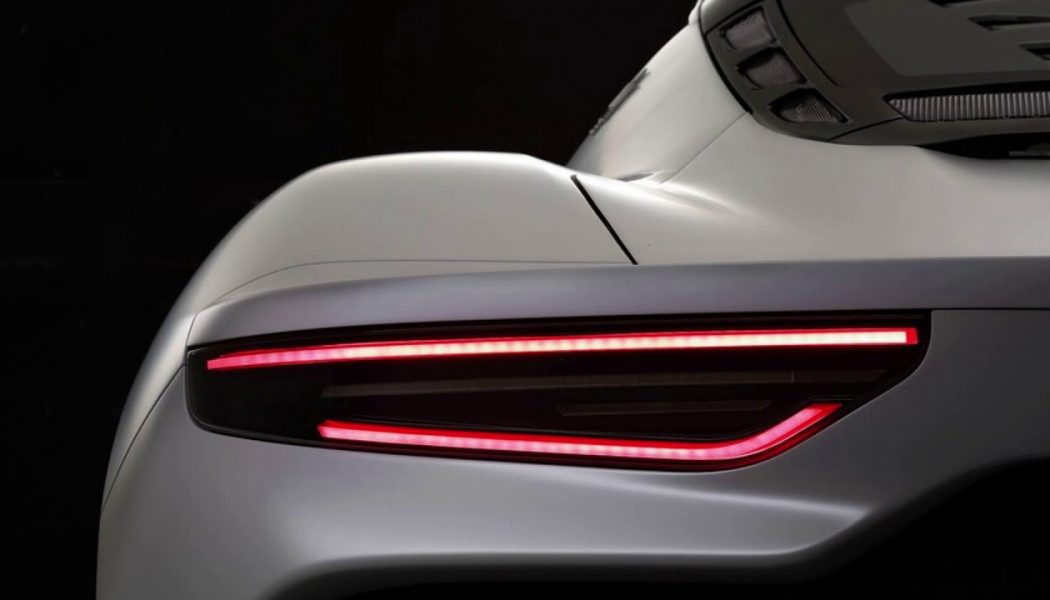The Maserati MC20 has been developed without any input from long-time benefactor and engine supplier Ferrari, and its first all-new engine—the twin-turbo 3.0-liter V-6 Nettuno—is quite impressive. Its Formula 1-inspired pre-combustion chamber got all the headlines during the car’s launch last year, but we just had a chance to (virtually) tour the Maserati Engine Lab where MC20 engines will be assembled (on the site where engines were built when the Orsi brothers first moved Maserati from Bologna to Modena) and learned some interesting clarifications and new facts about this historic new engine.
Pros and Cons of That 90-Degree Bank Angle
Pros of the engine’s 90-degree bank angle cited by chief engineer Matteo Valentini: It provides a good compromise in overall engine width (39.4 inches), height (25.6 inches), and weight (less than 485 pounds). Maserati has a long history and reliability track record with 90-degree engines (and though he didn’t say it, perhaps some tooling that’s optimized for that setup). It also permitted sufficient space to package the added plumbing required for the port and direct injection, as well as Maserati Twin Combustion technology, which a 60-degree bank angle apparently would not.
Cons: When using a four-main-bearing crankshaft with common crankpins for adjacent cylinders, a V-6 engine only fires evenly (every 60 degrees) if the cylinder bank angle is 60, 120, or 180 degrees. Maserati chose not to offset the crankpin angles for even firing, so there will be a “lope” to the cadence of its firing, just as there was in the original 1962 Buick Fireball V-6, which was derived from Buick’s 215-ci aluminum V-8. This will increase the small inherent imbalance created whenever there’s an uneven number of cylinders in a line. The Buick reportedly ran so rough that an exec from rival American Motors described it as “rougher than a cob.”
No Balance Shaft!
General Motors split the Buick V-6’s crankpins so that it would fire evenly (once every 60 degrees of crank rotation) in 1977, and then added a balance shaft in 1988, but Maserati owns the snarl its engine makes and perceives no need for any such gentrification efforts. After all, designing the crank to incorporate extra throws would either compromise its stiffness and strength or force it to grow in length. Likewise, adding a balance shaft would certainly rob power and add weight. And of course, engine mount technology has come a long way since the ’60s, so maybe it’ll be just fine.
The Top 100 Horses
When asked what contribution the Maserati Twin Combustion (pre-combustion chamber) technology contributed, Valentini noted that this engine without it would make just over 500 hp and that engaging the prechamber ignition is necessary to take output to the full 621 hp and 538 lb-ft of torque. He was quick to note, however, that when driving the MC20 you’ll never notice a transition from “conventional” direct injection and in-cylinder spark-plug ignition to prechamber ignition; no VTEC-cam switch-over point. Sophisticated engine maps determine when to phase the port and direct injection in and out, and when to fire the main cylinder plug or the prechamber plug.
At low-to-moderate loads and engine speeds, combustion is initiated by the main plug in the cylinder. When the hammer’s down and the revs are rising, the maps begin to phase in the centrally located prechamber. With its plug firing, combustion starts in the prechamber and then shoots out of the tiny jets in the bottom of the chamber to help propagate the flame front more quickly throughout the cylinder.
No Hot-Vee?
All the cool kids (AMG, BMW M, Audi RS, Porsche, Cadillac, McLaren, etc.) are snuggling their twin-turbochargers down in the valley of their 90-degree vees. So why does Maserati stick with inboard intake, outboard exhaust? Valentini’s official answer: They couldn’t find a way to achieve 210 hp/liter in a hot-vee configuration that was both reliable and sufficiently clean. He also noted that this arrangement typically raises the center of gravity. Another potential contributing factor this fashion-forward Italian brand might have been hesitant to say in so many words: hot vees are ugly; carbon-fiber intake covers are much prettier.
Unsigned Masterpieces
Each engine will move through six stations inside the historic Maserati Engine Lab, with different technicians spending three-to-four hours in each station. At the end of the line, the engine gets hooked up and run for 40 minutes on a test dynamometer to ensure everything works. Many hands make light, repeatable, quality work, but six signatures would take up a lot of space, so these engines will carry no signature.










